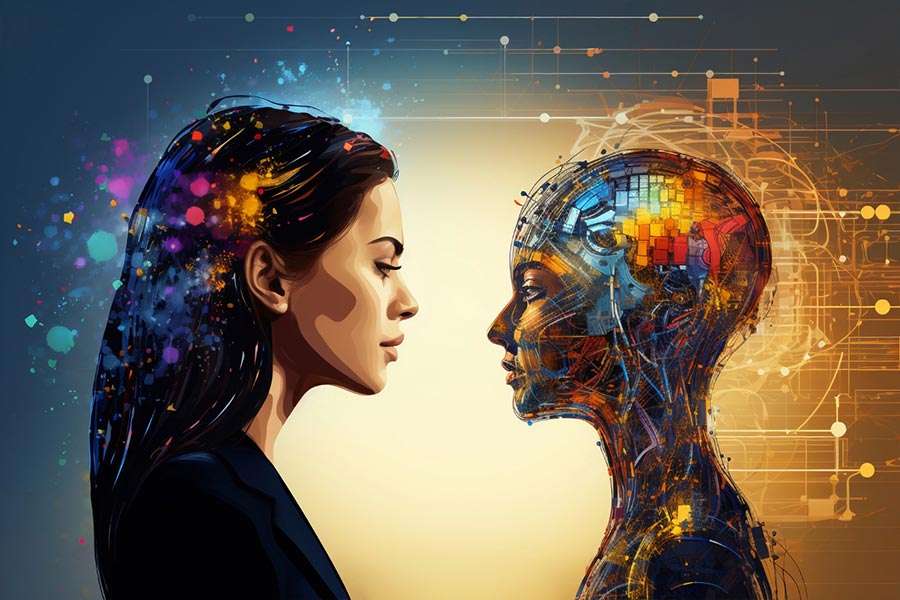What Can't Artificial Intelligence Do?

Let’s talk about beautiful things
One day, lying on the beach and wanting to spend time in good company, I downloaded an Artificial Intelligence (AI) — neural network GPT-4 — to my phone (they had a free subscription for three days).
I was wondering what to ask him so he wouldn’t be offended. Or I’ll be the first on the list for the destruction of mankind. I ask computer vision respectfully — what are the most beautiful poems in your opinion?
Then the artificial neural network thought for three seconds and gave out the expected. It said that the question is subjective and depends on many factors. But here you are, if you are interested in my opinion, examples of the most beautiful poems.
He gave me a quatrain from my favorite Russian poet Alexander Blok, incomprehensible and not even heard by me, maybe it wasn’t even Blok, something about the ocean. Then a passage from Shakespeare’s Sonnet in an unfortunate translation and not the most beautiful. Then “A night, a street, a lamp, a drugstore,” by the same Blok. A strong verse, but hardly beautiful either. And finally, Schiller’s lyrics to the “Ode to Joy”, which is just pathetic nonsense.
Okay, I muttered something disappointed, remembering, however, about possible revenge. The machine said that it was a pity — it could not please me.
It’s nothing, I think, even modern girls understand poems and poets less and less.
Are you joking?
Then I decided to simplify the task — let AI say the funniest joke.
The neural network thought about it for half a second, gave out the usual phrase about subjectivity, and offered to laugh at such, as it put it, “a classic joke”. Mom persuades her son to eat porridge because it is so useful.
“Okay,” says the son. — ‘I’ll eat it if you list all the useful elements it contains.’ Then mom says it has all the most important vitamins and trace elements and then tells the Latin alphabet. Which letter to laugh at — I didn’t understand.
How did you like it? — asks the machine, reminding me of a joker who jokes without restraint in any company, but whose jokes no one laughs at.
That’s the way it is. So, for now we, poets and people with a sense of humor should not be afraid of anything. They say that GPT-5 is on its way, and in general, the neural network learns quickly. But somehow, I am calm for my sense of humor and sense of beauty.
Recently, a popular Saturday radio program in my country, traditionally and successfully hosted by two presenters equipped with a well-hung tongue and a sense of humor, was “hooked up” with a third extra. This is an AI speaking in a female voice (reminiscent of a zombie’s voice), which tries to make jokes, but it turns out to be sad and even creepy in some places.

Does your dog like a sauna?
Then my smartphone and I overheated in the hot June sun and I waddled off the beach.
On the way, I met a strange couple. A tall man was leading a dog on a leash, I think a Russian Greyhound. She was wearing colored knitted gaiters, and her gait was so flirtatious, bouncing. And he was saying something serious to her.
As I passed by, I caught a snippet of conversation. “…but still, I like a steam bath better than a sauna.” — The master was telling the greyhound, and he was nodding as if he understood what he was saying.
Though where with such hair to the bath, and even in gaiters. On the other hand, maybe it has a chip in it. All dogs are chipped at registration. Talk to your pet about it.
So why do they want to limit it?
However, many people fear not mythical threats to the destruction of humanity. But, for example, manipulation in election campaigns, where AI can make a candidate too smart or too beautiful. It is not in vain that in February the deputies of the European Union reached an agreement on the Artificial Intelligence regulation, which aims to ensure safe and responsible use of AI. Violations face millions of dollars in fines.
“This is a ground-breaking regulation that governs the development of AI systems, their introduction to the market, as well as their supply and use”, Toomas Seppel, a sworn lawyer at the Hedman law firm, said in a commentary transmitted to BNS.
There are million-dollar fines for violating the requirements of the AI ordinance. For example, a violator of the requirements could face a fine of up to €7.5 million or 1.5% of a company’s annual turnover in the future. In the case of large global enterprises, fines can reach €35 million and amount to up to 7% of global turnover.
“The amounts of fines depend both on the seriousness of the infringement and on the size and turnover of the company. Such a strong control mechanism is important to prevent infringements and ensure the effective protection of people’s rights, promoting the responsible development and use of artificial intelligence,” explained Seppel.

Are we safe?
For humans, the transparency associated with the regulation is very important: when communicating with humans, AI technology systems must inform users that they are communicating with a machine. This applies, for example, to automatic identification at border control, and chatbots in customer service, as well as Snapchat and ChatGPT.
In addition, people using artificially created deepfakes must indicate that the content is generated by artificial intelligence. There are no fines for individuals, but this does not exclude the user of deepfakes from liability on general grounds, for example, in the case of libel.
The regulation introduces the concept of general-purpose artificial intelligence (GPAI). The best-known types of neural networks are currently ChatGPT, Gemini, Midjourney, DALL-E, i.e. those systems that can perform tasks such as generating texts, images, or sounds. In the future, GPAI systems must comply with transparency requirements.
The ruling also regulates more powerful GPAI with large language models, and training data that can cause systemic risk. The best known of these are OpenAI (GPT-3, GPT-4), DeepMind (AlphaGo, AlphaFold), and IBM (IBM Watson), and additional obligations will apply to them.
Levels of danger
Sworn counsel explained that the ruling categorizes AI systems into three categories based on potential risk: low, high, and prohibited.
Permitted AI technology systems are subject to general transparency requirements, such as technical documentation, copyright compliance, and disclosure of aggregate data used during training. Additional obligations and prohibitions are imposed on high-impact and prohibited-risk generating systems.
High-risk AI systems are subject to extensive obligations, such as establishing a risk management system, preparing and updating technical documentation, complying with transparency requirements, and ensuring human oversight. Examples of high-risk AI systems include those used in critical infrastructure, medical devices, law enforcement, and justice.
The EU has reached a consensus that artificial intelligence systems that pose a threat to fundamental human rights will be classified as prohibited risk systems and their development and use will be prohibited in the EU.
Prohibited systems include, for example, biometric systems and facial recognition databases that use sensitive information. For example, emotion recognition in the workplace and in educational institutions is banned, as well as systems that manipulate people’s unconscious behavior and exploit their vulnerabilities.

Stay tuned
The Artificial Intelligence Regulation now awaits further clarification and adoption by EU lawmakers. Estonia is currently developing its artificial intelligence strategy based on the EU regulation, which provides guidance and creates standards, as well as looking more systematically at ways to ensure AI reliability and mitigate risks in both the development and use of AI.
The AI regulation will be approved at the commission level in the coming weeks. Then, the EU plenary vote in the European Parliament, which is expected to take place in April, will be put to it.


